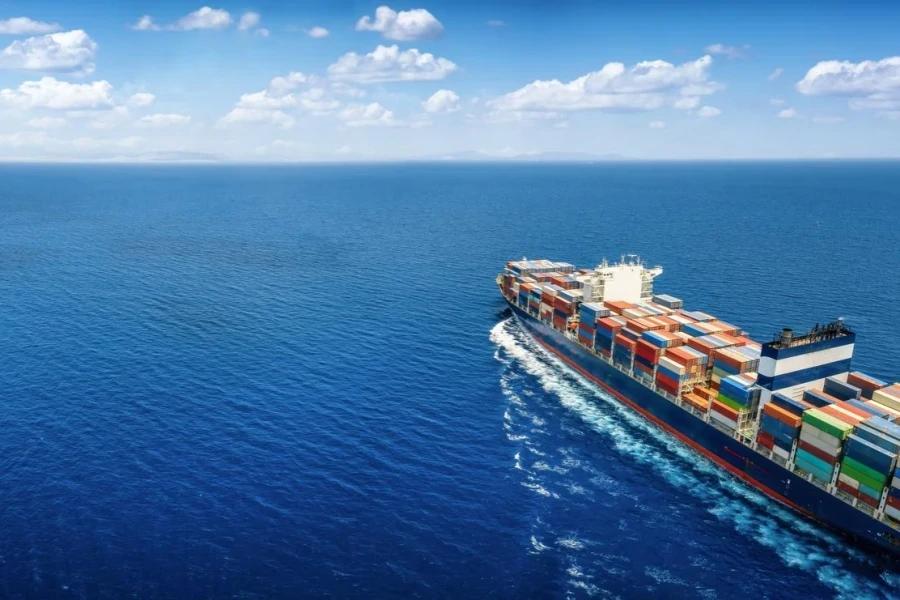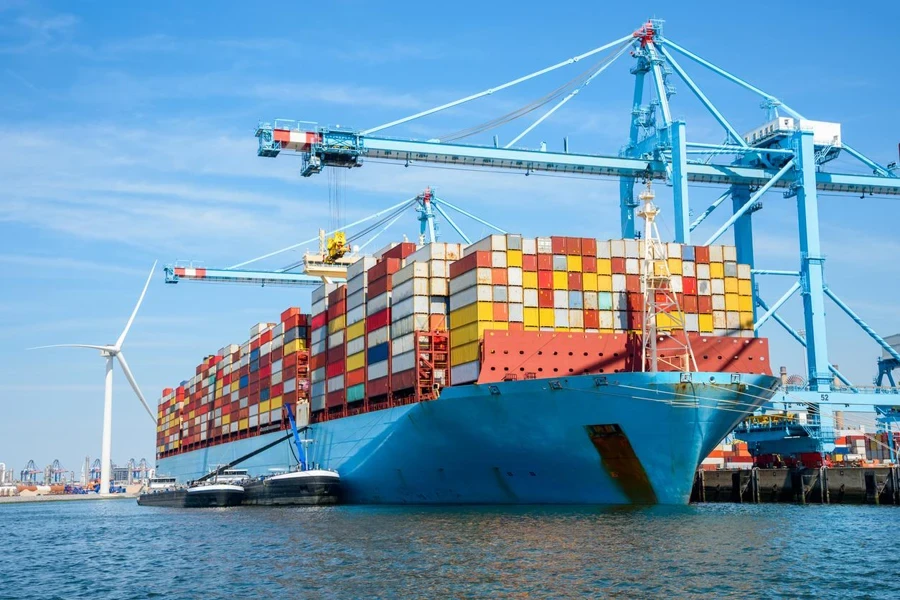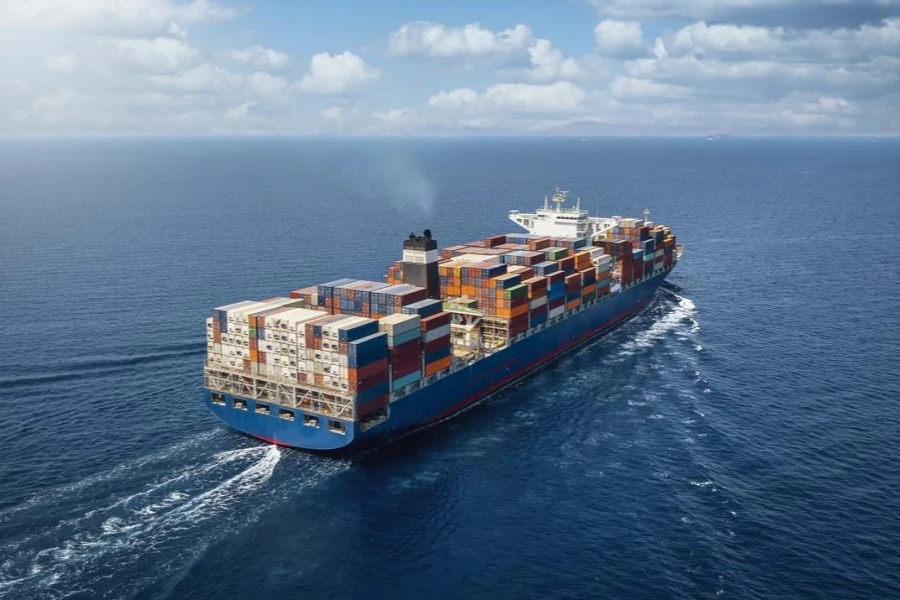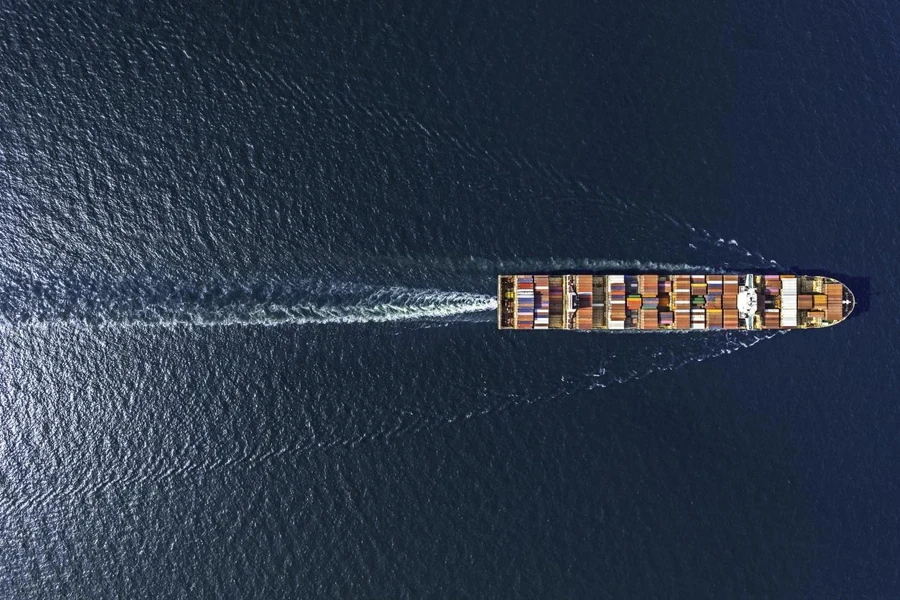Table of Contents
1. Introduction
2. Exploring the Key Cargo Ship Types
3. 2025 Market Trends: What’s Driving the Cargo Ship Industry?
4. Essential Factors to Consider When Choosing Cargo Ships
5. Spotlight on Top Cargo Ship Models and Cutting-Edge Features
6. Conclusion
Introduction
Choosing the best cargo ships in 2025 is crucial for companies looking to improve efficiency and stay ahead in the market competition. These ships are vital for moving goods along trade paths. They come in a wide range of sizes with varying capacities and technologies. Selecting the best option can result in advantages such as savings on fuel expenses, decreased emissions, and enhanced logistical operations. Given the progress in eco-fuel choices and state-of-the-art technology, modern freight vessels provide more space and improve dependability and flexibility, serving as crucial resources for businesses aiming to streamline their logistics and address upcoming needs.
Exploring the key cargo ship types

A deep dive into major cargo ship categories
Cargo vessels play a role in commerce by catering to different requirements in various sectors of the industry landscape. In 2025, cargo shipping will have unique features and benefits in each category.
Ultra-Large Container Ships (ULCS): These vessels are essential for carrying many products across vast distances. They are known to surpass 20K TEUs (Twenty-foot Equivalent Units). MSCS ships like the Ever Alot, with a storage capacity of 24K TEUs, play a role in trade routes connecting Asia and Europe. They are highly efficient in terms of cost per container. Demand port infrastructure, which may restrict their operations to only the biggest harbors. The efficiency of these ships is essential in cutting down transportation expenses and ultimately lowering the prices of goods in global trade.
Feeder Ships: Smaller port connectors feeder ships link ports to the worldwide shipping network. They handle lighter cargo loads ranging from 1‚000 to 3‚000 TEUs with great flexibility and efficiency. These ships are the backbone of commerce operations by moving containers between ports and larger transshipment centers. They enable the remote markets to become part of the global supply chain network‚ facilitating the seamless distribution of goods across the globe.
Dual-Fuel Vessels: With the focus shifting towards sustainability, the industry has a rise in the use of dual-fuel vessels. These ships can run on fuels and eco-friendly alternatives like LNG or methanol. Their ability to switch between fuel types not only aids in emissions reduction but also provides flexibility for ship operators to comply with evolving fuel standards and availability. Maersks decision to expand its fleet of methanol-powered vessels exemplifies the trend within the industry towards adopting environmentally friendly shipping solutions.
Specialized Cargo Ships: Apart from the container and feeder ships used in shipping industries today, there are also vessels tailored for specific goods and industries. These specialized ships include refrigerated vessels known as reefers designed to transport goods like fruits and vegetables; roll-on/roll-off ships (Ro-Ro ships) ideal for transporting vehicles; and bulk carriers utilized for transporting quantities of raw materials such as coal and grain. Each of these vessels is carefully crafted to meet the requirements of the cargo they carry to ensure effective transportation. Employees play key roles in industries where the safety of goods is vital and any disruptions or harm could lead to financial setbacks.
2025 market trends: What’s driving the cargo ship industry?

3.1 The growing shift toward sustainable and dual-fuel vessels
By the year 2025̧, there will be a change in the cargo ship industry as more focus is placed on dual fuel vessels due to increased regulations such as the International Maritime Organizations’ goal to reduce carbon emissions by 50% by 2050̧ prompted by newer requirements, like the Energy Efficiency Existing Ship Index (EEXI ) and Carbon Intensity Indicator (ClI). These regulations will necessitate ships to undergo retrofitting or be replaced with dual-fuel vessels. These vessels can run using diesel or more environmentally friendly fuels, such as LNG, which can lower emissions by around 30%. Prominent maritime companies like Maerski and CMA CGM spearhead this shift in technology adoption. Maerski aims to have 30 percent of its ships powered by fuel by 2030.
The change is also driven by advancements such as wind-powered propulsion and battery-electric hybrid ships that are becoming more popular in the industry. Although dual fuel ships have costs, the economies of scale are lowering operational expenses, making them more appealing to shipowners. With regulations and fluctuating fuel prices, the demand for dual-fuel vessels is projected to rise rapidly. This will aid the industry in achieving sustainability objectives and cutting down its carbon emissions.
3.2 Global trade dynamics shaping cargo ship demand
The outlook for cargo ships remains tied to trade trends until 2025, as per the World Trade Organization (WTO), which is projecting an uptick of 3.8%. The surge of online shopping and interconnected supply chains will keep container ships highly sought after. This is because they handle most goods, emphasizing the necessity for bigger and more effective vessels to manage the surge of merchandise flow amidst growing dependence on international procurement.
The evolving geopolitical landscape is causing a shift in trade routes, as seen in the Belt and Road Initiative (BRI). This will lead to a rise in the need for carriers and regional vessels in response to the growing demand for transport services within Asia Pacific regions like Africa and the Middle East. The BRI’s primary objective is to enhance infrastructure across these areas, with projections indicating a growth of 5-6% in shipping activities within these regions. Moreover, the impact of supply chain interruptions and the shift towards nearshoring has led to a surge in the need for sea shipping services and specialized vessels in response to changing trade and logistics requirements.
Essential factors to consider when choosing cargo ships

4.1 Matching capacity with operational goals
Choosing the ideal cargo ship that fits a company’s objectives is essential to optimizing efficiency and cost savings. The boat size should be evaluated based on the projected cargo quantity and shipping routes. Large container ships (ULCS), which can carry more than 20,000 TEUs (Twenty-foot Equivalent Units), offer notable benefits for businesses engaged in trade activities. These vessels allow for the transportation of goods in one voyage, reducing the necessity for trips and ultimately cutting down on overall shipping expenses.
selecting the right ship isn’t about opting for the biggest one out there! Businesses in areas with ports or those concentrating on trade might find feeder ships. They usually range from 1,000 to 3,000 TEUs. It’s a better fit instead. These vessels offer flexibility and can reach ports that larger ships can’t access easily; this makes them perfect for linking markets to global trade networks. Selecting a shipping capacity based on the business requirements is key to maintaining scalable operations.
4.2 Prioritizing fuel efficiency and environmental responsibility
In 2025 and beyond, prioritizing fuel efficiency and environmental responsibility is crucial in choosing cargo ships. The strict emission regulations imposed by the International Maritime Organization (IMO) drive the industry to adopt eco approaches. Dual-fuel ships that can run using fuels and cleaner options, such as LNG or methanol, are gaining significance in the maritime sector. These vessels assist businesses in meeting standards while also providing options for fuel selection that could result in savings over time.
Furthermore, embracing sustainability is not a matter of meeting regulations but about building a positive reputation and ensuring long-term success. Businesses that focus on eco-shipping options can improve their brand perception and cater to the increasing consumer interest in environmentally conscious methods. Opting for vessels equipped with cutting-edge fuel-saving technologies, like hull constructions and energy-efficient propulsion systems, is a decision that aligns with both financial and ecological objectives.
Spotlight on top cargo ship models and cutting-edge features

5.1 Highlighting the leading ultra-large container ships of 2025
In the 2025s world of sized container ships (ULCS), vessels are breaking records in size and technology advancements. The top contenders include ships such as the MSC Irina and the OOCL Spain, with capacities surpassing 24,000 TEUs. These ships stand as feats of engineering aimed at enhancing fuel efficiency and cutting emissions while maximizing cargo space. Along the trade pathways connecting Asia and Europe, their presence is vital for ensuring the operation of worldwide trade activities where achieving economies of scale is fundamental for cost-efficient business practices.
The construction of these Ultra Large Container Ships (ULCS) has been improved to tackle the issues presented by their scale. Utilizing state-of-the-art hull designs and energy-efficient technologies, like propellers and air lubrication systems, are common features in these vessels. These advancements boost fuel economy and elevate the ships’ agility, which is vital for navigating busy ports and narrow passageways. As international trade grows further into the future, these large container vessels will stay essential to the sector established as the benchmark for eco-friendly, eco-friendly sea transportation.
5.2 Breakthroughs in dual-fuel and eco-friendly shipping
In response to the growing need for eco solutions in the shipping sector, dual-fuel ships have become an advancement in decreasing the environmental impact of sea transportation. These vessels run on fuels and cleaner options such as LNG or methanol, aligning with the industry’s commitment to strict environmental policies. Maersk and CMA CGM are at the forefront of this effort by investing in dual fuel technology that reduces emissions and offers flexibility in fuel procurement to address price fluctuations effectively.
Integrating dual-fuel technology represents an advancement in the industry’s efforts to reduce carbon emissions and promote sustainability initiatives aboard ships. These vessels have engines that can seamlessly transition between fuel sources while maintaining optimal performance. This allows operators to easily comply with evolving regulations and adjust to varying fuel supply conditions. Moreover, some maritime vessels are also considering utilizing biofuels and synthetic fuels to minimize their greenhouse gas footprint further. The move towards using dual-fuel vessels indicates a dedication in the sector to sustainable shipping practices that aim to keep cargo ships operational and eco-friendly for years to come.
5.3 Unveiling the latest features and innovations in cargo ships
In 2025, cargo vessels will come with various features to improve efficiency and safety while being environmentally friendly. A major advancement is incorporating monitoring systems and predictive maintenance tools. This will offer operators important performance data for better decision-making and preemptive maintenance to decrease downtime and cut operational expenses.
The newest freight vessels are constructed with sustainability, incorporating energy-saving fixtures, waste heat recovery systems, and optimized hydrodynamics to decrease fuel usage and emissions effectively. Additionally, resilience to varying circumstances is prioritized in these ships through features like reinforced hull structures and enhanced stability systems for navigation in turbulent waters. These advancements will be pivotal in upholding the edge and sustainability of maritime transportation as the shipping sector progresses.

Conclusion
Careful selection of cargo ships is crucial for businesses looking to streamline their operations and adapt to the changing needs of trade markets. Companies can guarantee effective and economical shipping options by matching ship capacity with requirements, focusing on sustainability, and making use of progress. The recent developments in dual fuel technology and massive container ships bring many benefits. It’s essential to balance these advancements and lasting value and efficiency. In this changing industry landscape, making informed choices will set businesses up for success.




